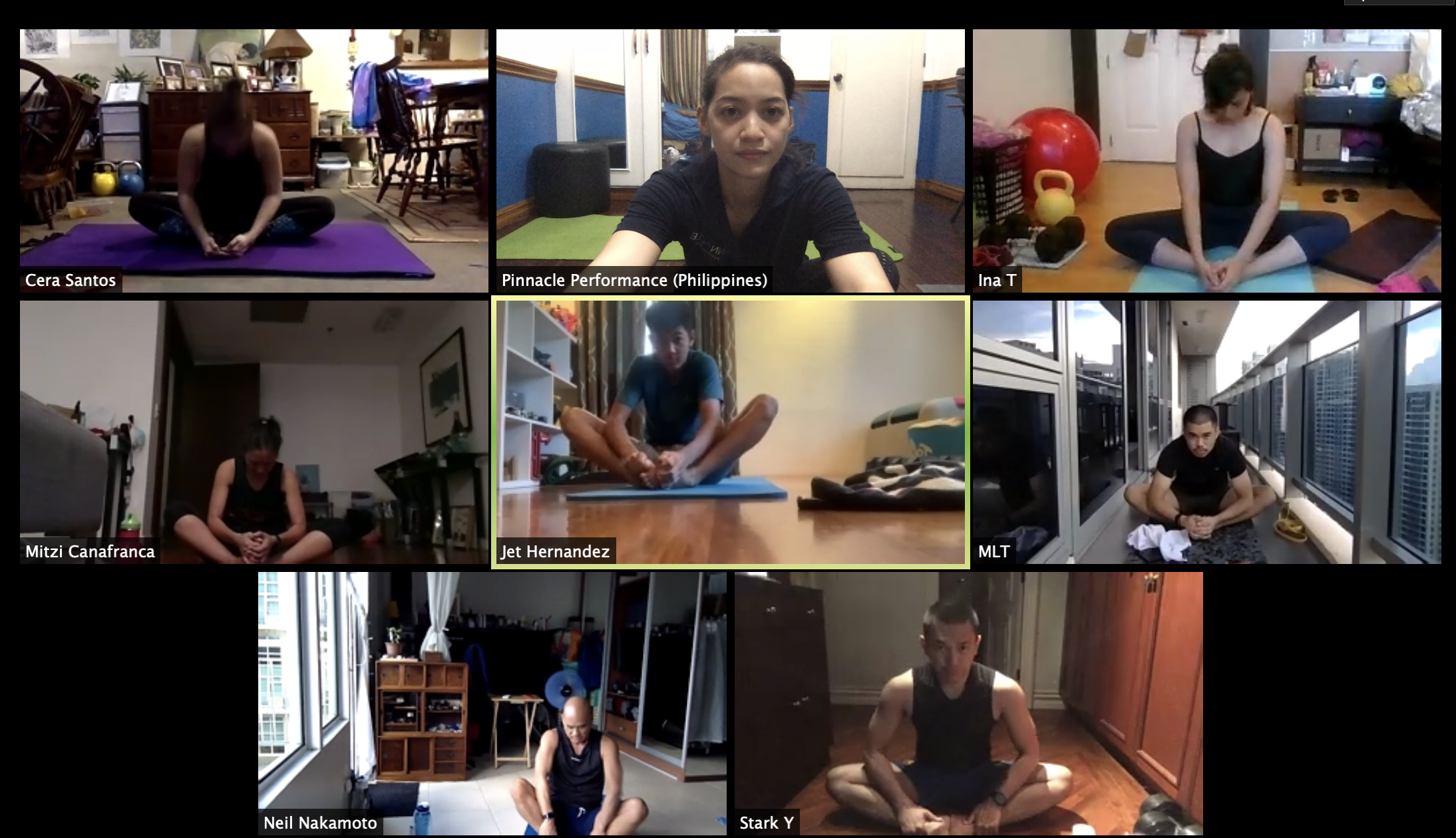Ever heard of that Filipino saying, “Galaw, galaw, baka ma-stroke (Move around or you might get a stroke)?” It may not be a hundred percent accurate but there is some truth to it.
Movement is essential to our daily lives. It allows us to move from one place to another and to do different kinds of activities we set out minds on. But from time to time, our bodies will seem uncooperative however we try to focus on the task at hand. Several reasons could cause this but we will be focusing on just two: Mobility and Flexibility.
First, let’s define the two terms. Flexibility is most commonly associated with the muscles that surround our bodies, it is the range of movement around a joint. Mobility, on the other hand, is the ability to use that range and move fluidly without physical hindrance (ASCA, 2020). These two work hand in hand allowing us to enhance our movement qualities and competencies.
Generally speaking, everyone moves the same way, following the same fundamental movement patterns: squat, hinge, lunge, push, pull, carry, (core). Whether you’re a child, a 90-year old, or a professional basketball player, your basic movements are the same. Your ability to perform these movements at the highest level depends on the interaction between your body’s mobility, flexibility, and stability. Even if you are a world-class athlete or someone picking up a new sport, including mobility and flexibility exercises into your routine can be beneficial for several reasons.
Here are five benefits of having mobility exercises in your routine:
It allows you to move your body freely and with ease by keeping the stiffness at bay;
It helps release stress, and relaxes your body, physically and mentally;
It enhances movement performance by promoting normal joint function which then allows
the muscles to absorb force and align joints properly (Netter, 2nd ed). This means that having good mobility can carry over to improvement in an athlete’s ability to perform different complex movements which help enhance their strength and power. Pistol squats, for example, not only involves ample amounts of unilateral leg strength, but also the ability of the ankle to dorsiflex, and the hips to rotate to complete the activity stably;
Mobility exercises also lessen the risk of injuries by preventing fatigue, abnormal joint movements or arthrokinematics, and compensations from occurring due to imbalances in strength and flexibility (Netter, 2nd ed). There is a common observance of tightness in structures that surround painful areas in the body. For example, tightness of the quadriceps muscle is often seen in athletes with knee pain, and tightness of the pectorals and deltoids, or immobility of the thoracic spine can often lead to some shoulder impingement injuries. Therefore, the two can be correlated;
And mobility exercises facilitate the body in active recovery from more strenuous and high intensity activity as a form of low-intensity exercise.
Knowledge of the benefits of mobility exercise is simple; its execution is as easy. The beauty of mobility drills and exercises is that they are short and sweet. Mobility exercises don’t have to be fancy or complicated - doing light stretches and movements that challenge the range of motion in your joints can go a long way. Here are a few things you would want to keep in mind when building your own mobility routine:
Number of exercises: 3-5 - Keep it simple! You do not need a lot of exercises, choose some that are memorable and target several joints of the body already.
Duration: 10-30 minutes - Mobility exercises are not something you would want to rush and they can be completed in short bouts. They can be short enough to be incorporated to a daily warm up or they can extend to a light workout on its own.
Frequency: At least twice a week - think of the “use it or lose it” principle. The more frequently you practice full ranges of movement, the more the body will learn to use these ranges for different movements in your daily life. The more you don’t practice it - you can keep in mind the Filipino saying above.
Even though people move the same, we still belong to different bodies, so we do not have to pressure ourselves to be as mobile as other people. Keep in mind that mobility still relies on age (younger>older), gender (F>M), body structure, your ability to relax both mentally and physically, and your innate elasticity—so be kind to yourself. Listen to your body, work with what you have, and focus on what you can do about it.
To cap things off, there are a ton of benefits in stretching and doing mobility exercises: they are short, simple, and they are good for all human beings! To boot, you cannot really go wrong with them. Remember that consistency is always key. Keep it light and easy. Have fun!
About the author
Coach Bernice is an ASCA accredited Coach and a graduate of BSc in Physical Therapy from the University of the Philippines. Her time training and rehabilitating youth and collegiate athletes in various schools and sports facilities in Manila has given her the opportunity to hone her skills both as a Physical Therapist and a Coach. Read more about her here https://pinnacleperformance.asia/bernice-atienza




